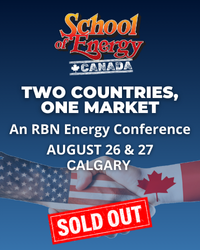The momentum for North American LNG right now is incredible. With Europe’s efforts to wean itself off Russian natural gas supplies boosting long-term LNG demand in the continent and Asian demand expected to grow even further, there has been a strong push for new LNG projects in the U.S., Mexico and Canada, with enough commercial support and capital present to advance at least some of them to construction and operation. Venture Global on May 25 reached a final investment decision on Phase 1 of Plaquemines LNG, the first North American project to take FID since Energía Costa Azul LNG in 2020. But it’s unlikely to be the last. Cheniere’s Corpus Christi Stage III is likely to follow in the coming months and support is coalescing around a handful of other projects too. So far this year, more than 20 MMtpa of long-term, binding commitments tied to new North American LNG capacity have been signed, propelling a new wave of LNG projects towards FID. In today’s RBN blog, we take a look at the trends in the recent commercial commitments.
The biggest driver of new LNG project development right now is, of course, Russia’s invasion of Ukraine. The ongoing war has put European energy markets at the forefront of global news and forced Europe to confront its reliance on Russian gas supply and develop a new long-term energy strategy. The U.S. has already been helping stabilize European markets by sending huge volumes of destination-flexible LNG to the continent (see Help Is on Its Way). But while the additional LNG has helped shore up gas supplies for right now and the winter ahead, there are still short- and long-term concerns. In the short term, Europe faces the prospect of more Russian supply cutoffs to certain countries and customers — Russia previously cut off all volumes to Poland and Bulgaria (see Where Do We Go From Here) and then last week to Denmark, Finland and to Shell contracts in Germany (although those contracts represent a very small portion of total Russian gas to Germany).
The cutoffs currently center around Russia’s demand to be paid for gas in rubles and non-compliance with that demand has resulted in these cutoffs, but the European Union (EU) has allowed for a workaround to make payments in rubles in a way that does not violate the current sanctions against Russia. The EU has seemingly left it up to individual countries and companies whether or not they wish to comply, and the most dependent on Russian imports, like Germany’s Uniper, have complied with Russian demands. In the short term, it’s certainly a volatile situation as sanctions against Russia become harsher and the war drags on, Russia’s retaliation could also escalate. In the long term, however, the end goal is clear: the continent hopes to wean itself entirely from Russian supplies and more LNG is a huge part of that. But the politics remain tricky, given that Europe continues to aggressively pursue decarbonization and is grappling with how best to balance its energy security and climate goals. The uncertainty has left some European offtakers reluctant to sign new LNG contracts, at least so far.
Join Backstage Pass to Read Full Article









